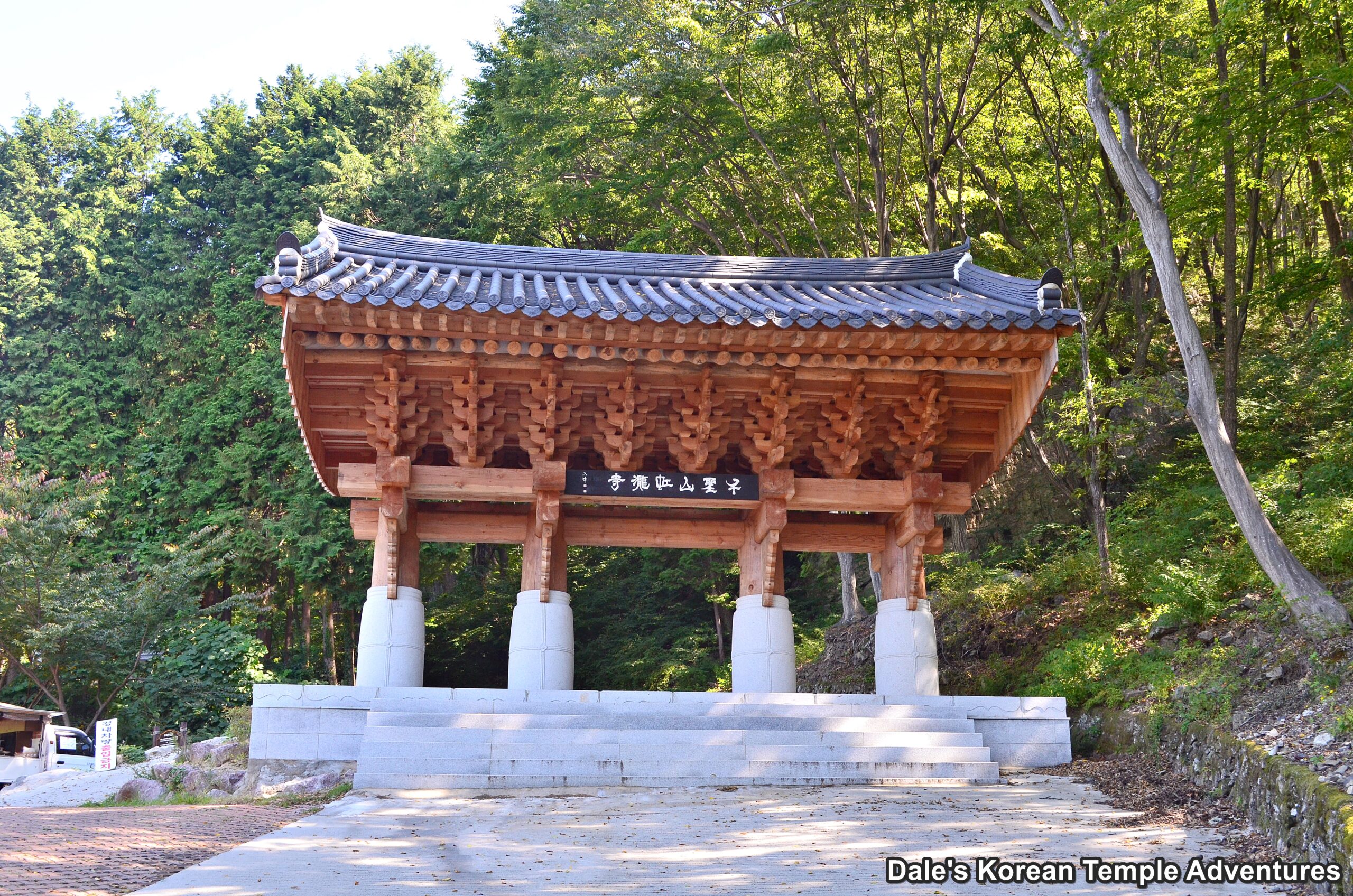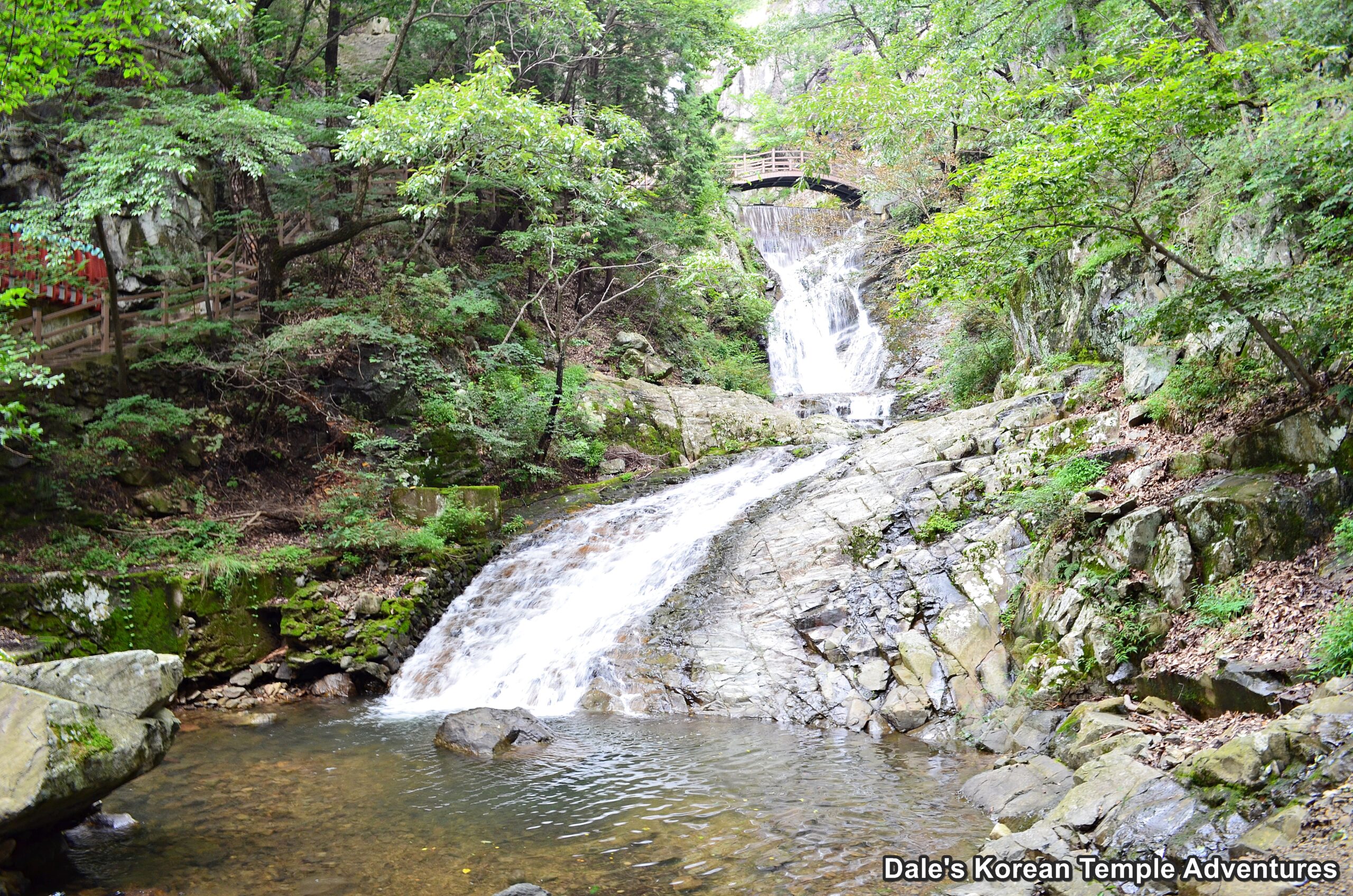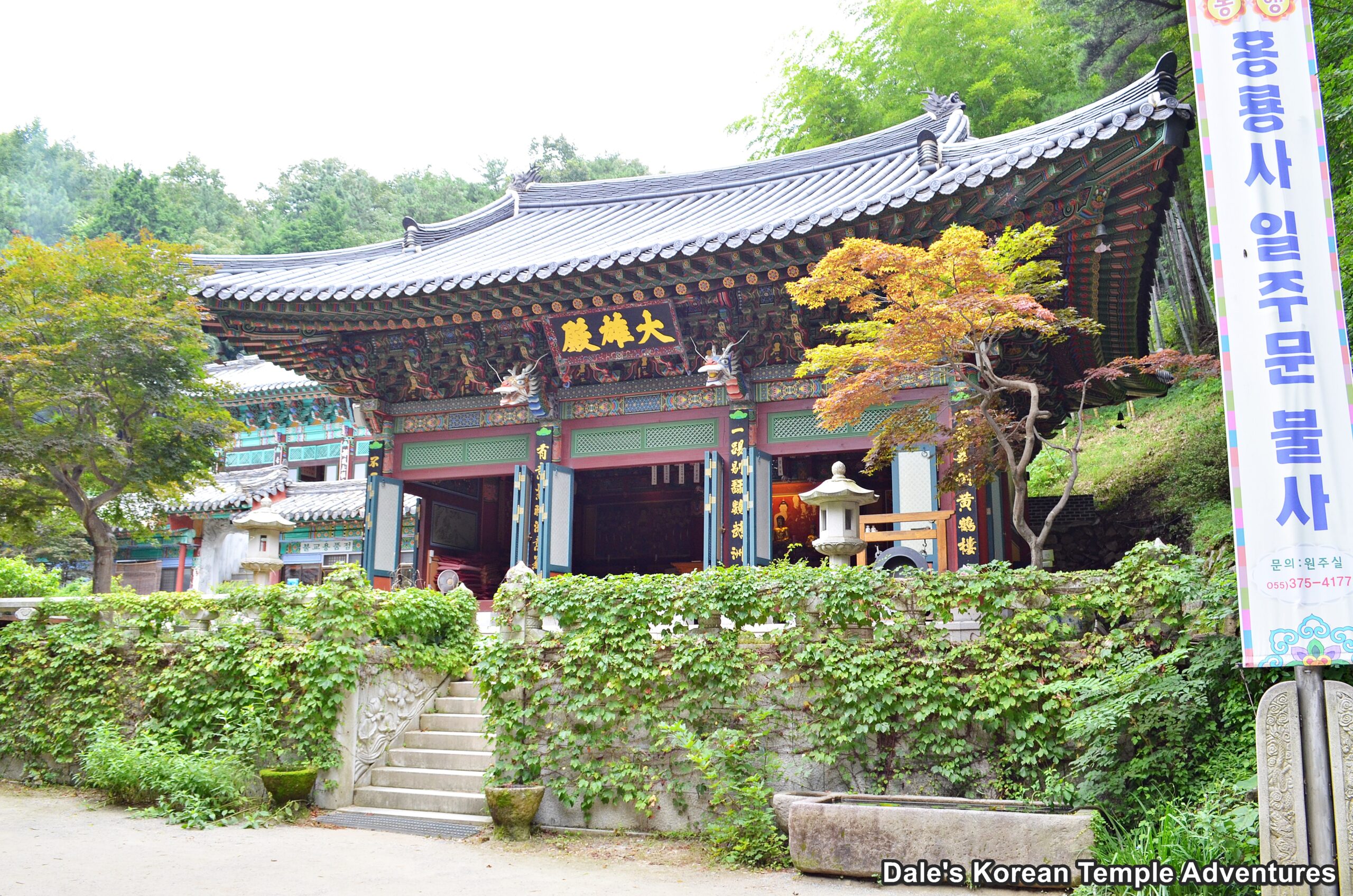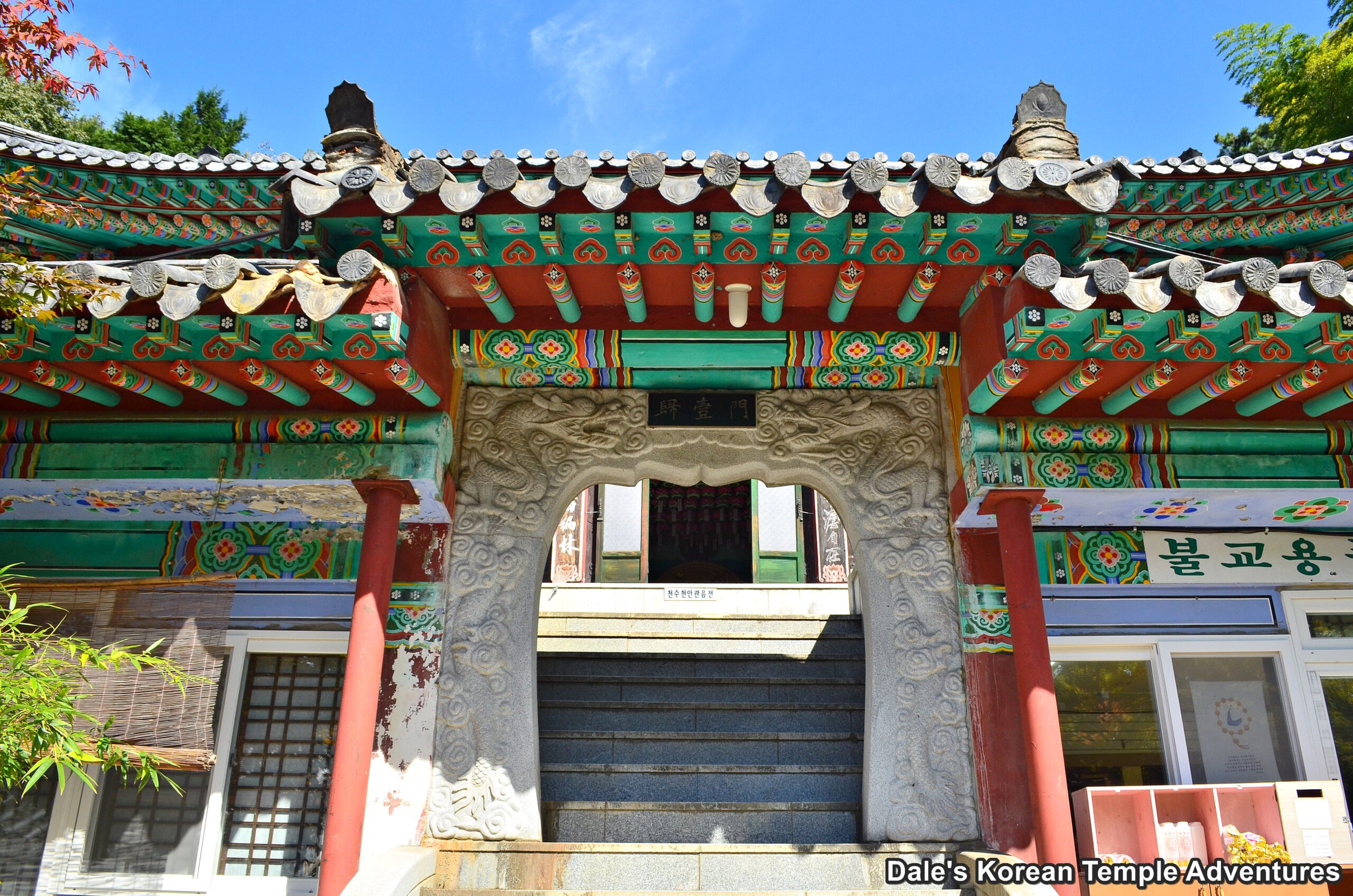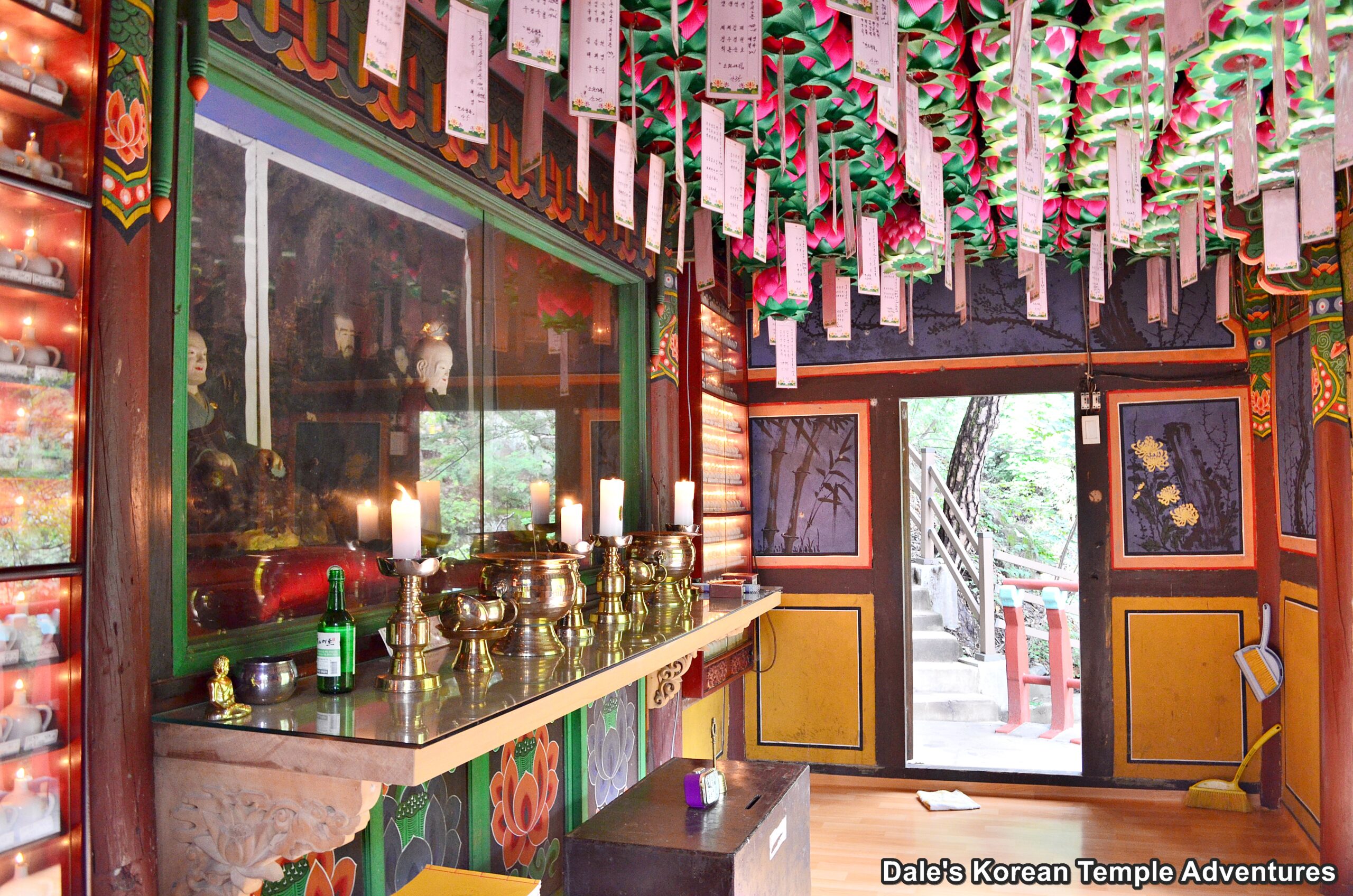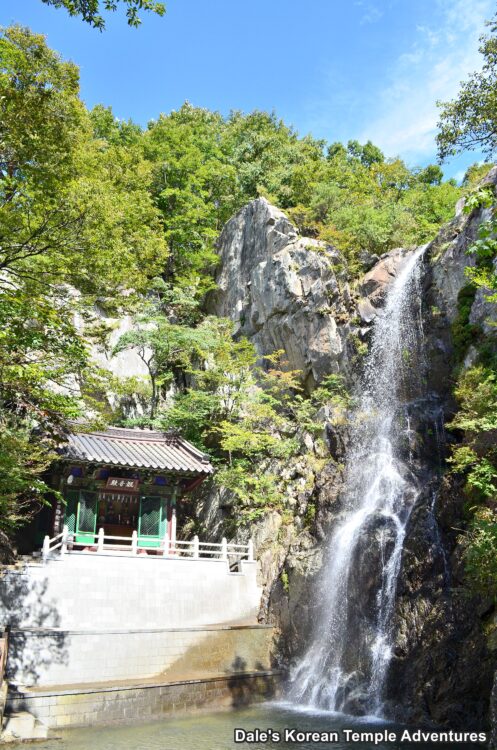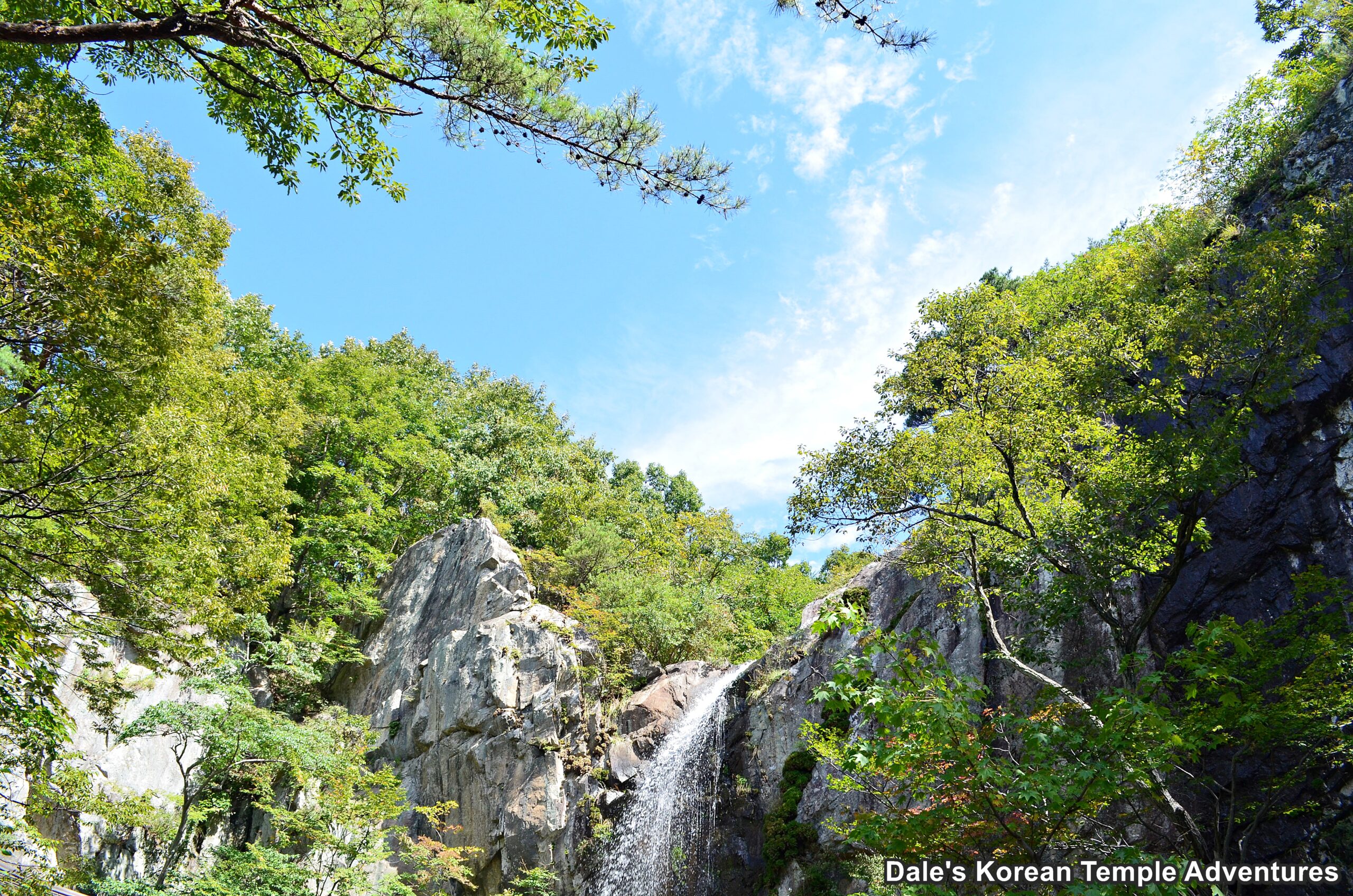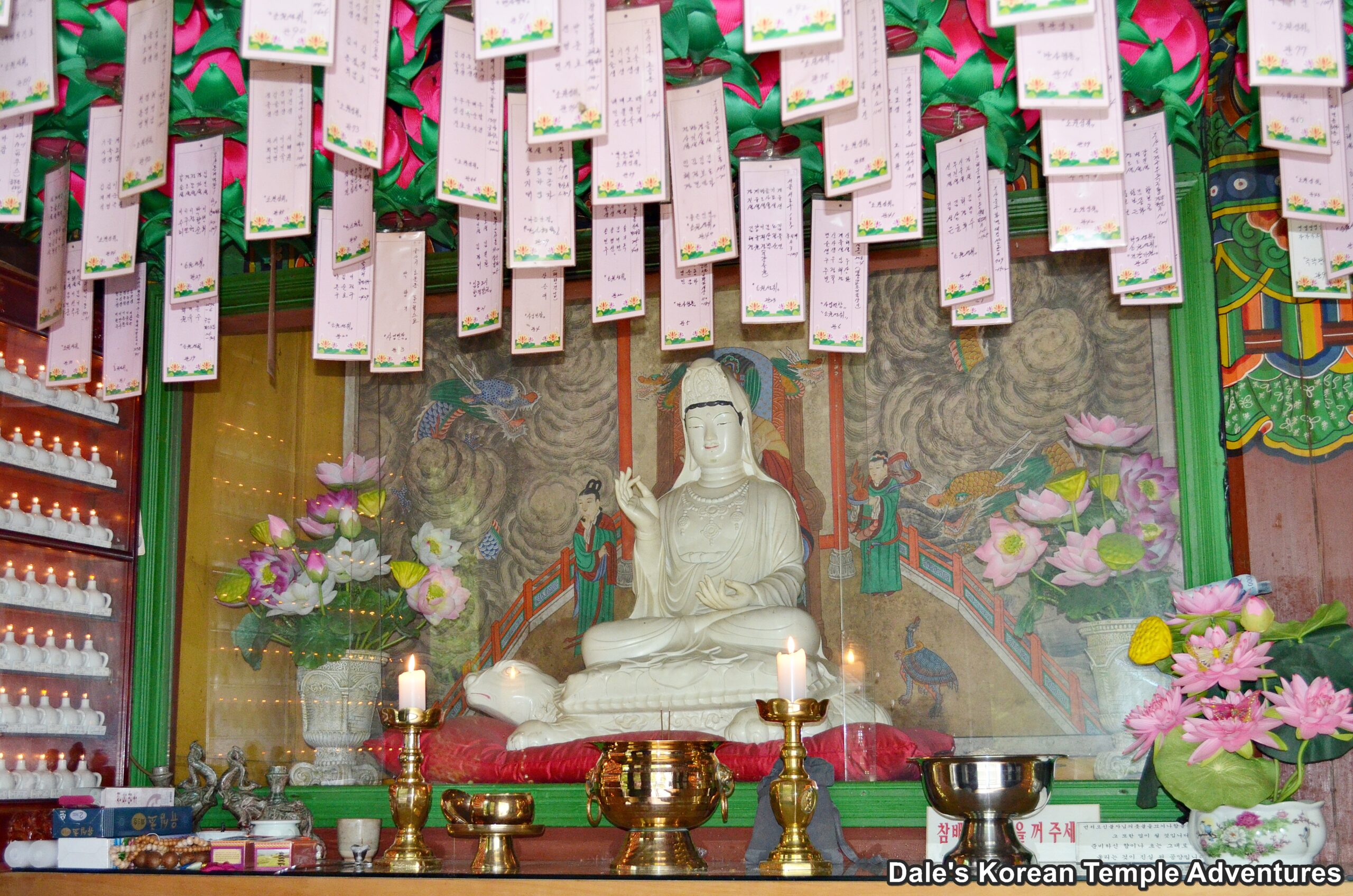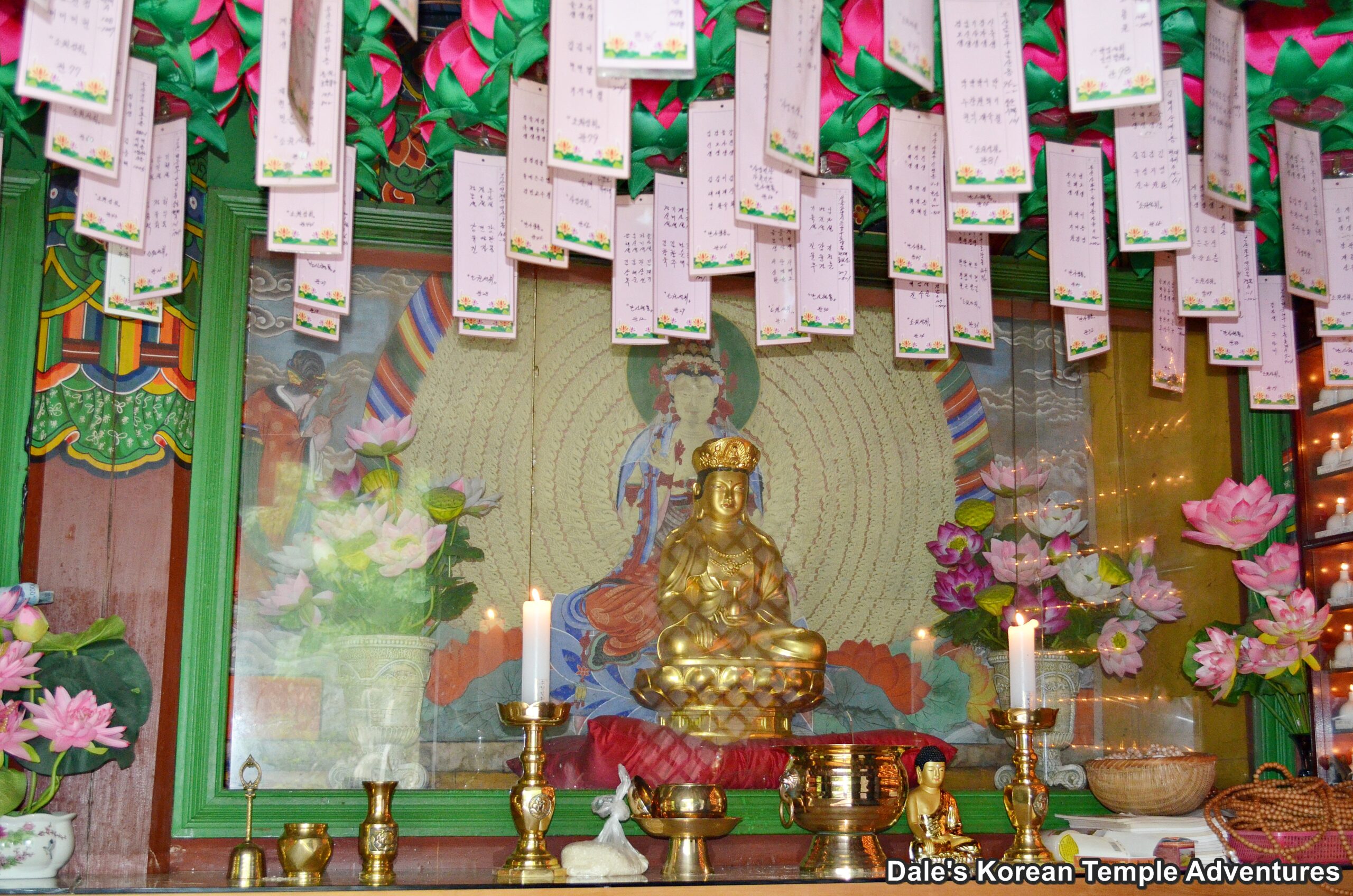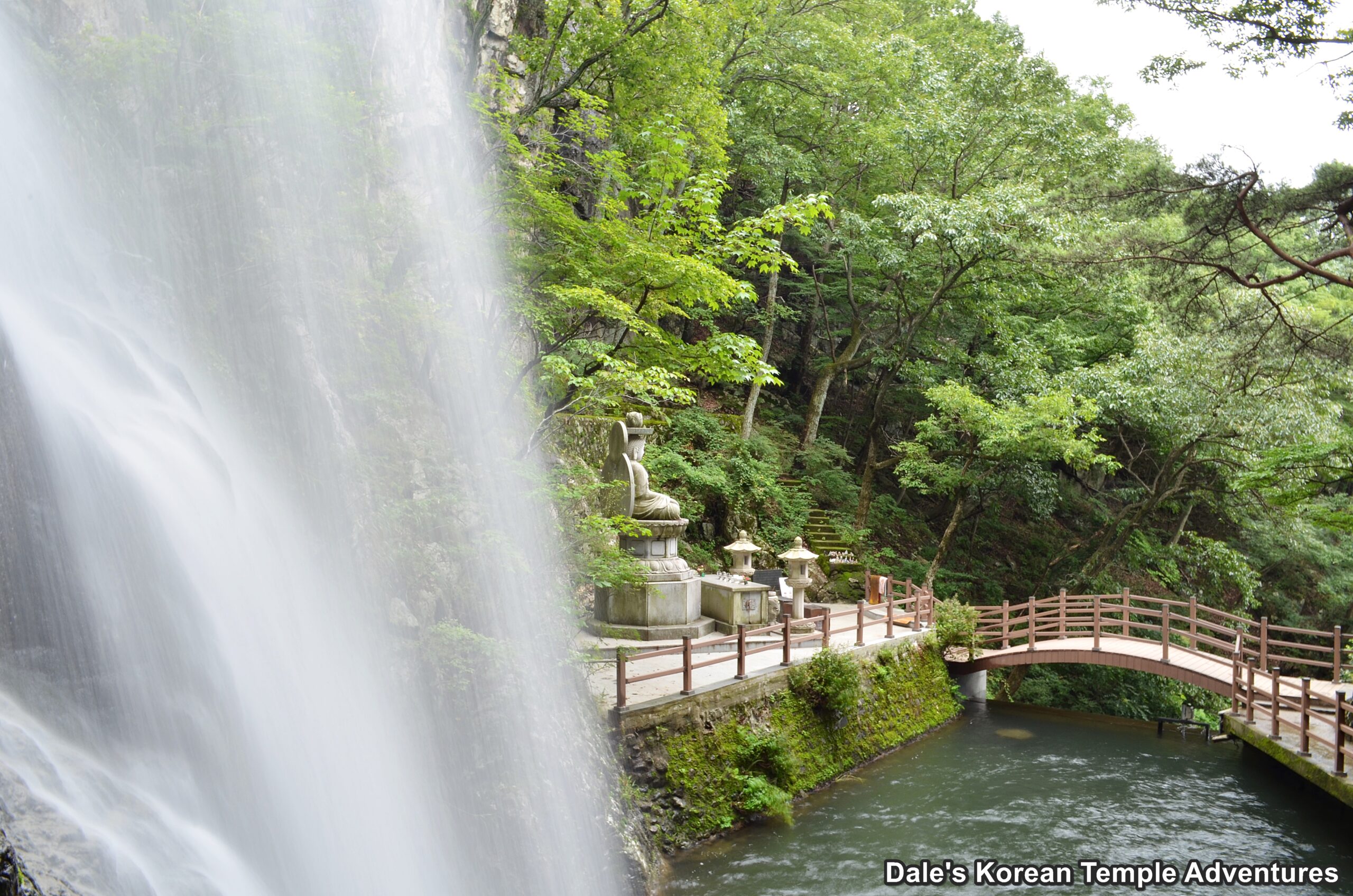Hongryongsa Temple – 홍룡사 (Yangsan, Gyeongsangnam-do)
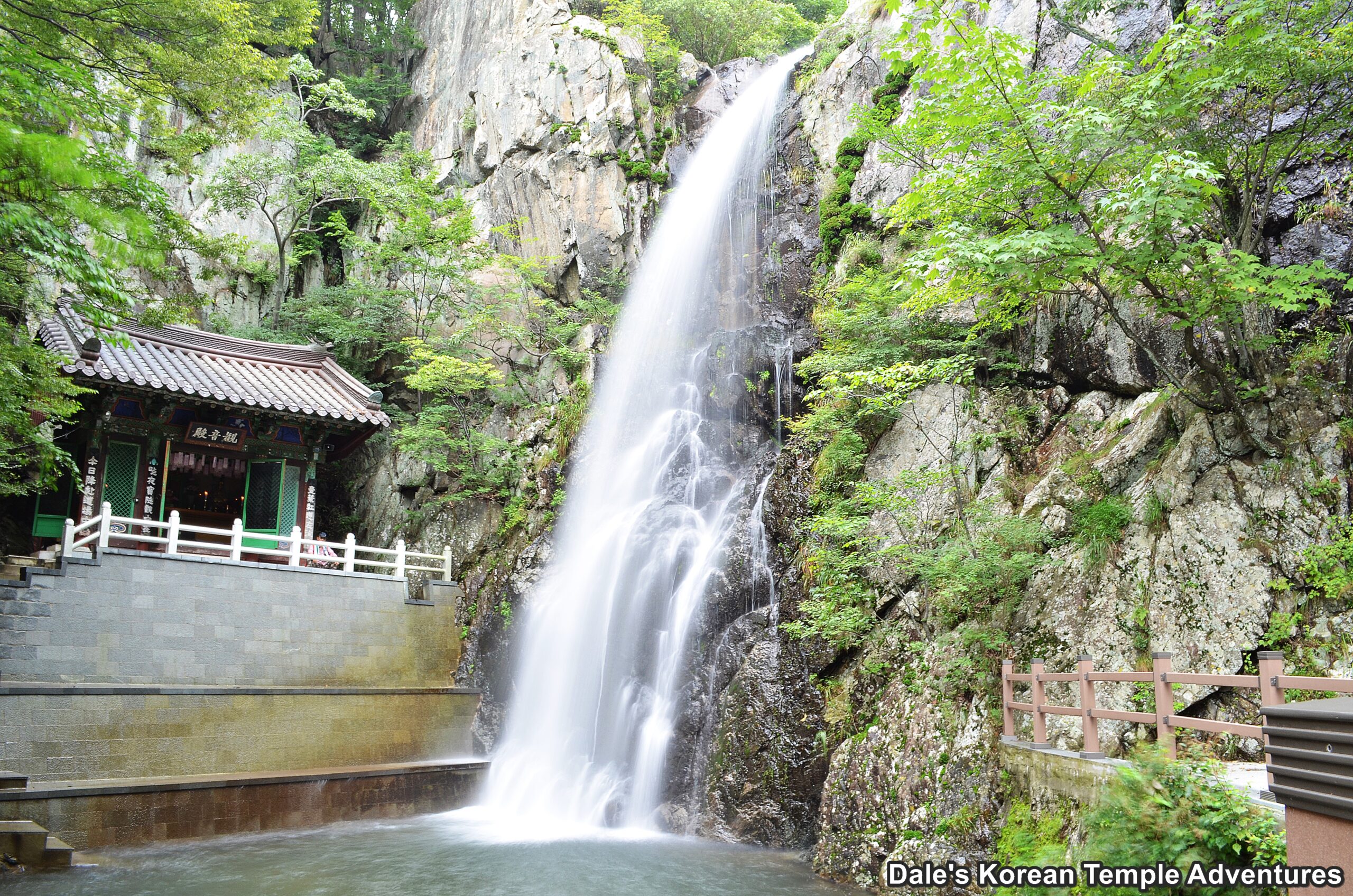
Temple History
Hongryongsa Temple, which means “Rainbow Dragon Temple” in English, is located on Mt. Cheonseongsan (920.1 m) in Yangsan, Gyeongsangnam-do. The name of the temple comes from the waterfall, Hongryong-pokpo Waterfall, which is at the centre of the temple and stands fourteen metres in height. According to legend, there was a dragon that once lived inside this waterfall. Afterwards, it rode off on a rainbow up into the sky and disappeared.
The temple was first built during the reign of King Munmu of Silla (r.661-681 A.D.) by the famed monk Wonhyo-daesa (617-686 A.D.). Wonhyo-daesa first built this temple to teach the Avataṃsaka Sūtra, or “Hwaeom-gyeong – 화엄경” in Korean, to one thousand monks from Tang China, for which the mountain gets its name. In addition to Hongryongsa Temple, Wonhyo-daesa built an additional eighty-nine hermitages on Mt. Cheonseongsan at this time. The reason that Wonhyo-daesa chose this location to build Hongryongsa Temple is so the monks could take refreshing showers from the spray of Hongryong-pokpo Waterfall, while listening to his teachings. Originally, the temple was known as Naksusa Temple, which means “Fall Water Temple” in English.
After the creation of the temple, there is no history that exists up until Hongryongsa Temple was destroyed by the invading Japanese during the Imjin War (1592-1598). The Hongryongsa Temple site would remain abandoned until 1910, when a monk named Beophwa from the neighbouring Tongdosa Temple decided to rebuild it. And since the 1970’s, Hongryongsa Temple has continued to be expanded under the watchful eye of the head monk Ugwang. Now, there are a handful of shrine halls at Hongryongsa Temple.
Temple Layout
When you first approach the temple grounds, you’ll first notice the newly built four pillar Iljumun Gate. This gate was built within the last ten years as is the newly built pavilion that overlooks the cascading water that flows down from the famous Hongryong-pokpo Waterfall.
Further up the path, and you’ll finally come to the main temple grounds and the Daeung-jeon Hall. Adorning the exterior walls to the Daeung-jeon Hall are floral designs, two Dragon Ship of Wisdom murals, matching dragons above the shrine hall entry, and an all-white mural dedicated to Gwanseeum-bosal (The Bodhisattva of Compassion). Inside the Daeung-jeon Hall, you’ll find a triad centred by Seokgamoni-bul (The Historical Buddha). This statue is joined on either side by Jijang-bosal (The Bodhisattva of the Afterlife) and Gwanseeum-bosal. And hanging on either side of the main altar inside the Daeung-jeon Hall is a mural dedicated to Jijang-bosal and another dedicated to Chilseong (The Seven Stars).
To the left, and slightly to the rear of the Daeung-jeon hall, is the Gwaneum-jeon Hall at Hongryongsa Temple. There are a couple floral murals adorning the outside walls to this temple shrine hall. As for the interior, there is a large multi-armed and headed statue dedicated to Gwanseeum-bosal (The Bodhisattva of Compassion). The only other item inside the Gwaneum-jeon Hall is an enormous Shinjung Taenghwa (Guardian Mural).
To the far left of the Daeung-jeon Hall and the Gwaneum-jeon Hall are the monks dorms and the temple’s administrative office. However, it’s to the right of these two shrine halls that’s the main attraction to the temple.
Passing through a uniquely designed stone gate, you’ll start to make your way up a long set of stairs heading up towards Hongryong-pokpo Waterfall. Along the way, you’ll see a snuggly fit Sanshin-gak Hall. This shaman shrine hall is nestled into the side of a rock outcropping. Housed inside the Sanshin-gak Hall is a mural dedicated to two shaman deities: Sanshin (The Mountain Spirit) and Dokseong (The Lonely Saint).
Finally, having made it to the top of the stairs, you’ll come face-to-face with the beautiful Hongryong-pokpo Waterfall. To the right of the rainbow falls, and the pooling water created by these falls, is a stone statue dedicated to Yaksayeorae-bul (The Medicine Buddha). And to the left of the spraying falls is another Gwaneum-jeon Hall. Inside are two incarnations of the Bodhisattva of Compassion. The statue to the left is dressed all in white, while the statue to the right is dressed in gold. The falls tend to dry up during the winter months, so it’s best to visit Hongryongsa Temple during the spring or summer months when Hongryong-pokpo is at its peak.
How To Get There
Hongryongsa Temple, because of transportation difficulties, is one of the more difficult temples to get to. If you have a car, it makes finding Hongryongsa Temple that much easier. However, if you don’t have a car, you’ll need to get off of Highway 35 at Daeseong Village in Yangsan, Gyeongsangnam-do. It’s about a 3.5 k.m. hike, or one hour, to get to Hongryongsa Temple up this road and following the signs that continue to point you in the right direction.
Overall Rating: 7.5/10
Hongryongsa Temple is one of the most beautifully located temples you’ll find in Korea. The beautiful Hongryong-pokpo Waterfall, for which the temple gets its name, flows down and through the rest of the temple grounds. And when you add all the beauty that’s housed inside the temple shrine halls like the multi-armed and headed Gwanseeum-bosal and the two incarnations of the Bodhisattva of Compassion, you’ll have more than enough reason to try and find the rather difficult to locate Hongryongsa Temple.
